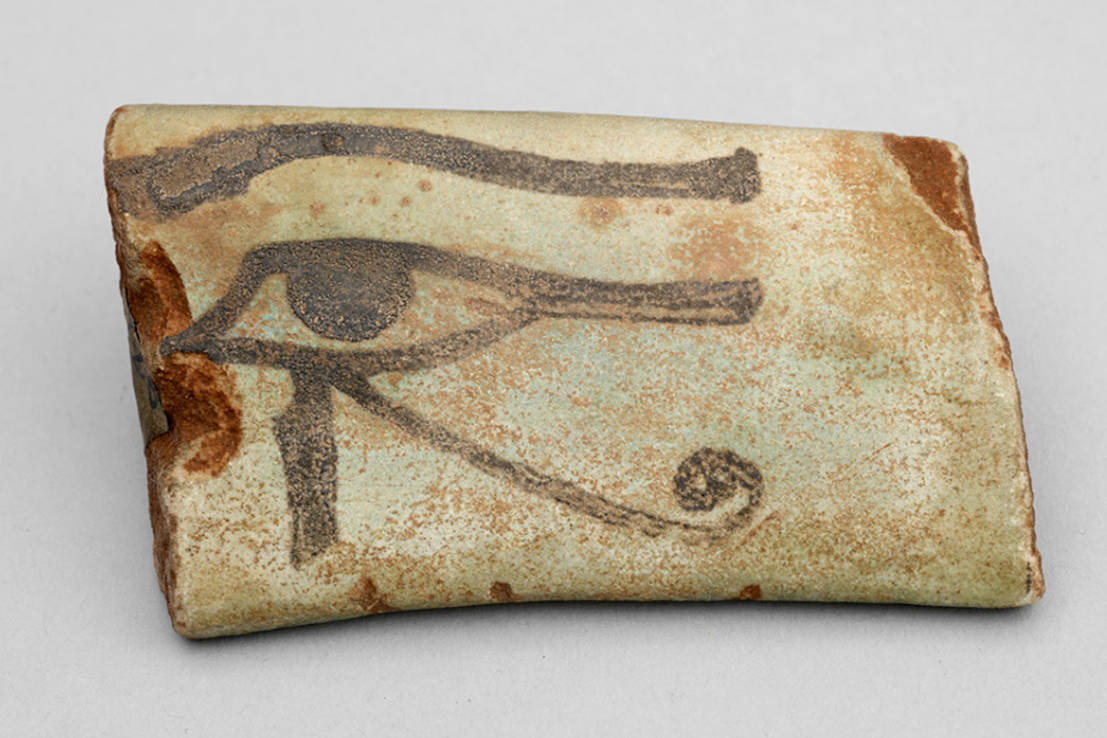
in Italiano / Italian translated by Federica Sebastiano
This object has been translated into 12 different languages by 16 different users
Questo è l’Occhio di Horus, anche noto come Occhio di “Wedjat”, ed era un simbolo di protezionepopolare nell’Antico Egitto. Il dio Horus erarappresentato come un falcoe, secondo la mitologia egizia, si fece rubare l’occhio durante una lotta controil suo rivale Seth, responsabile per l’uccisione di Osiride, padre di Horus. L’occhio fu poi restaurato dal dio Thoth e divenne “wedjat”, ovvero integro o sano. L’occhio divenne un popolare simbolo protettivo, in particolare per i morti, e rimase in uso per circa 3000 anni, dall’Antico Regno fino all’epoca romana. Era usato anche nelle culture vicine, come quella cananea, siriana e nubiana.
C’è qualcosa che conservi come portafortuna o come forma di protezione?
I translated most of the text rather faithfully to the original English text. However, I did take some liberties in linking together sentences. In English, sentences tend to be much shorter as this makes the text clearer. However, it is common in Italian to use longer sentences as this allows for a better flow in writing and in speech since the text does not need to be disrupted by full stops as often.Italian is quite a melodic language, so keeping the melody of the text flow is an important part of the language.
ReportDo you have something you’d like to say, in your own language or English, about the object or translation? We’d like to hear what you think.
Translations are community-sourced and for anyone to participate in, however you use your language. For more information, see Community Guidelines.
23 Sep, 2023
Italians, especially in southern Italy, are well known for their attachment to superstition. Therefore, it is not surprising that good-luck charms are particularly popular. Arguably, the most popular amulet is the “cornicello” or “cornetto” (meaning “little horn”). The amulet is believed to protect against “malocchio” (“evil eye”), and it is commonly found in the Italian regions of Campania, Lazio, Puglia, and Basilicata.
The cornetto is in the shape of a horn, and it can be made from metal, but it is most commonly red in colour. This makes them look very similar to chilli pepper, but it is meant to represent an eland horn. The cornetto finds its origin in Greek and Roman mythology as it is linked to another common symbol: the cornucopia. The cornucopia, also known as the “horn of plenty” is a symbol of abundance and it is commonly illustrated as a large horn-shaped container overflowing with fruits and flowers. Similarly, the cornetto is also associated with abundance and fertility and remains one of the most common Italian symbols of protection. If you ever go to Naples, you can be certain to see at least one cornetto be worn as jewellery, hung from the rearview mirrors of a car, or kept in a house for decor and good luck.